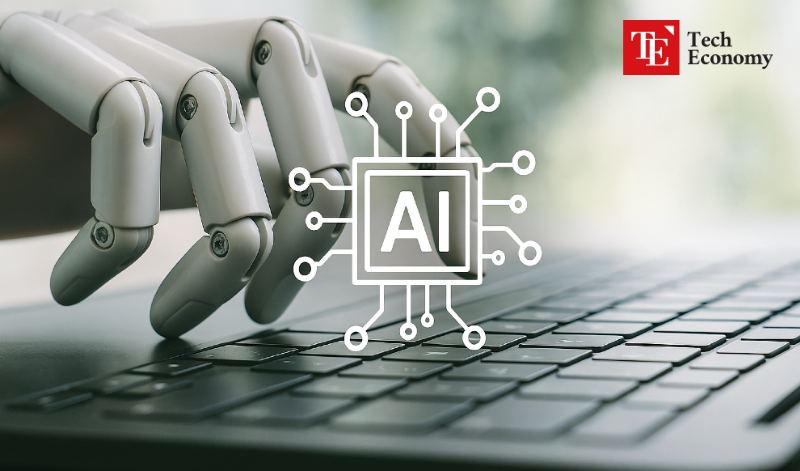America’s Vanishing Tech Jobs: The End of the Cloud-Fueled Boom
Input
Modified
The screens once ruled our world, confined, When work and life align, consider resigning. But now the cables start to fray, And tech-built towers fall away.
During the pandemic, the tech industry stood as one of the biggest winners. It led the charge during lockdowns, reshaped how people worked and lived, and expanded its reach into nearly every sector of modern life. However, as the world rebalances itself, the aftershocks of that tech boom are becoming increasingly apparent and more painful.
The shift is not merely cyclical. It marks a deeper correction rooted in changed consumer behavior, unsustainable profit margins, and the rapid rise of AI. With people returning to physical offices, schools, and social spaces, the digital dominance of the pandemic era is giving way to a hybrid reality. And companies that grew too large, too fast, are now making hard decisions about headcount and cost structures.
At the same time, emerging technologies that once inspired awe are now posing direct threats to jobs. Tools powered by artificial intelligence are replacing tasks traditionally performed by junior employees or support staff. While executives claim these changes improve efficiency, the result is an increasingly fragile labor market, particularly for workers in tech and adjacent fields. Compounded by trade tariffs, restrictive immigration policies, and rising cost pressures, the outlook for workers over the next several years appears dimmer than the headlines might suggest.

Post-Pandemic Recalibration Has Only Just Begun
The years between 2020 and 2022 were transformational for the IT and software sectors. The move to remote work created unprecedented demand for cloud services, e-commerce platforms, video conferencing tools, and cybersecurity solutions. Tech stocks soared, companies hired aggressively, and profit margins hit record highs.
But now that demand has normalized, companies are finding themselves overextended. No longer riding the wave of forced digital adoption, tech firms are being forced to confront the reality that many of their services are no longer mission-critical. This recalibration has led to layoffs, budget cuts, and a reassessment of long-term strategies.
The end of the pandemic boom did not just stop growth; it reversed it in some sectors. Software companies that had focused on enterprise subscriptions are seeing a rise in churn. Social media platforms are grappling with slowing user growth and volatility in ad revenue. Meanwhile, hardware manufacturers have seen consumer demand fall below pre-pandemic levels. A return to physical, in-person experiences has impacted everything from retail technology to online education.
While these companies have tried to diversify or launch new services, they are now more careful about capital allocation. Startups that once would have raised millions on ideas alone are now facing more challenging questions from investors about profitability and scale. Layoffs have become increasingly common across all tiers of the industry, from entry-level support roles to senior engineering positions.
What makes this situation particularly troubling is that the pullback in hiring comes just as college graduates are entering the job market. Many young workers who studied computer science or digital media with dreams of building the next great app now face a labor market with fewer opportunities and higher entry standards.
AI Replaces the Routine, and Then Some
As companies seek ways to reduce costs without compromising productivity, artificial intelligence is becoming an increasingly popular solution. From customer service chatbots to document generation tools, AI applications are replacing many of the lower-skilled, repetitive tasks once performed by junior staff or back-office teams. This trend is no longer theoretical. It is happening at a pace few predicted and with a reach that is broader than many imagined.
The pressure on entry-level positions is already evident. Data entry, content moderation, tech support, and even junior coding roles are being automated or outsourced to algorithms. What was once the training ground for future managers is now vanishing. These positions often served as stepping stones into the industry, providing workers with time to learn the company culture and develop new skills. Without them, a significant portion of the workforce may never gain a foothold in the industry.
Even more concerning is the realization that many mid-level roles are also at risk. Generative AI tools have advanced to the point where they can produce legal drafts, marketing copy, and even rudimentary code at a fraction of the time and cost it takes a human to do so. While these tools still require oversight, the number of people needed to deliver the same output is shrinking.
Companies are using AI not only to increase efficiency but also to justify downsizing. Once a firm finds a way to accomplish the same task with half the staff, it rarely looks back. Some have argued that this shift will open new kinds of jobs, but so far, the losses appear to outpace the gains.
With this backdrop, it is no surprise that job insecurity is spreading beyond the tech sector. White-collar workers across industries are reevaluating their future. Many fear their skills will become obsolete before they have time to retrain. Those who are employed are under increasing pressure to prove their value in ways that often extend beyond their job descriptions.
The growing presence of AI in daily workflows raises another challenge: wage suppression. Even if workers remain employed, their bargaining power is diminished when the alternative is an algorithm that can operate without breaks, benefits, or complaints. As AI continues to evolve, this pressure will only intensify.

Weak Job Data and a Fragile Economic Outlook
Recent labor statistics paint a troubling picture. For months, the U.S. labor market appeared resilient, even strong. But that narrative is now being questioned. Revised data reveal that job growth may have been significantly overstated earlier this year. The labor force participation rate has stagnated, and wage growth is slowing despite a historically tight job market.
This disconnect between perception and reality has serious consequences. Policymakers and investors who believed the job market was strong may now find themselves unprepared for a deeper slowdown. Economists are beginning to recognize that the apparent strength in employment figures masks more profound structural weaknesses, particularly in tech, manufacturing, and services closely tied to global supply chains.
The combination of domestic policy decisions and external economic pressures adds further strain. Trade tariffs, especially those enacted or threatened in recent months, have disrupted pricing for raw materials and finished goods. The resulting uncertainty has caused many firms to delay investment and hiring decisions. Meanwhile, immigration policy has made it harder to fill specialized roles, particularly in science, technology, and engineering.
These effects are not isolated. They compound on one another, forming a feedback loop that impacts productivity, confidence, and future planning. Businesses that fear additional cost increases from tariffs are holding more cash and spending less. Those who cannot find the right talent are slowing down projects. The overall result is a sluggish economy that grows just enough to avoid crisis but not enough to inspire optimism.
For American workers, especially those in tech-adjacent or tech-enabled industries, the next few years could be particularly challenging. Some economists warn that the country may be entering a phase of “silent recession,” where official indicators do not scream crisis, but real conditions on the ground continue to deteriorate.
If layoffs continue and hiring remains slow, the cumulative impact could be significant. Households may spend less, regional economies could suffer, and innovation may slow as fewer people are employed in creative and technical roles.
The road ahead is complicated. The U.S. economy remains large and diverse, capable of absorbing shocks better than most. But the labor market, especially within the once-dominant tech sector, is transforming. The post-pandemic boom is over, and the transition to a new normal is proving painful for many.
The integration of AI into core business functions offers cost savings, but it also poses a threat to the foundation of middle-class employment. Workers are being asked to adapt, often without clear guidance or support. And companies, under pressure to deliver profits, are increasingly prioritizing efficiency over people.
It is a period of reset, not just for businesses but for the very idea of work. As the digital age continues to evolve, the question is not whether there will be jobs, but instead what kind, and who will get them. The decisions made now will shape not only the future of the American economy, but also the lives and livelihoods of millions.





















